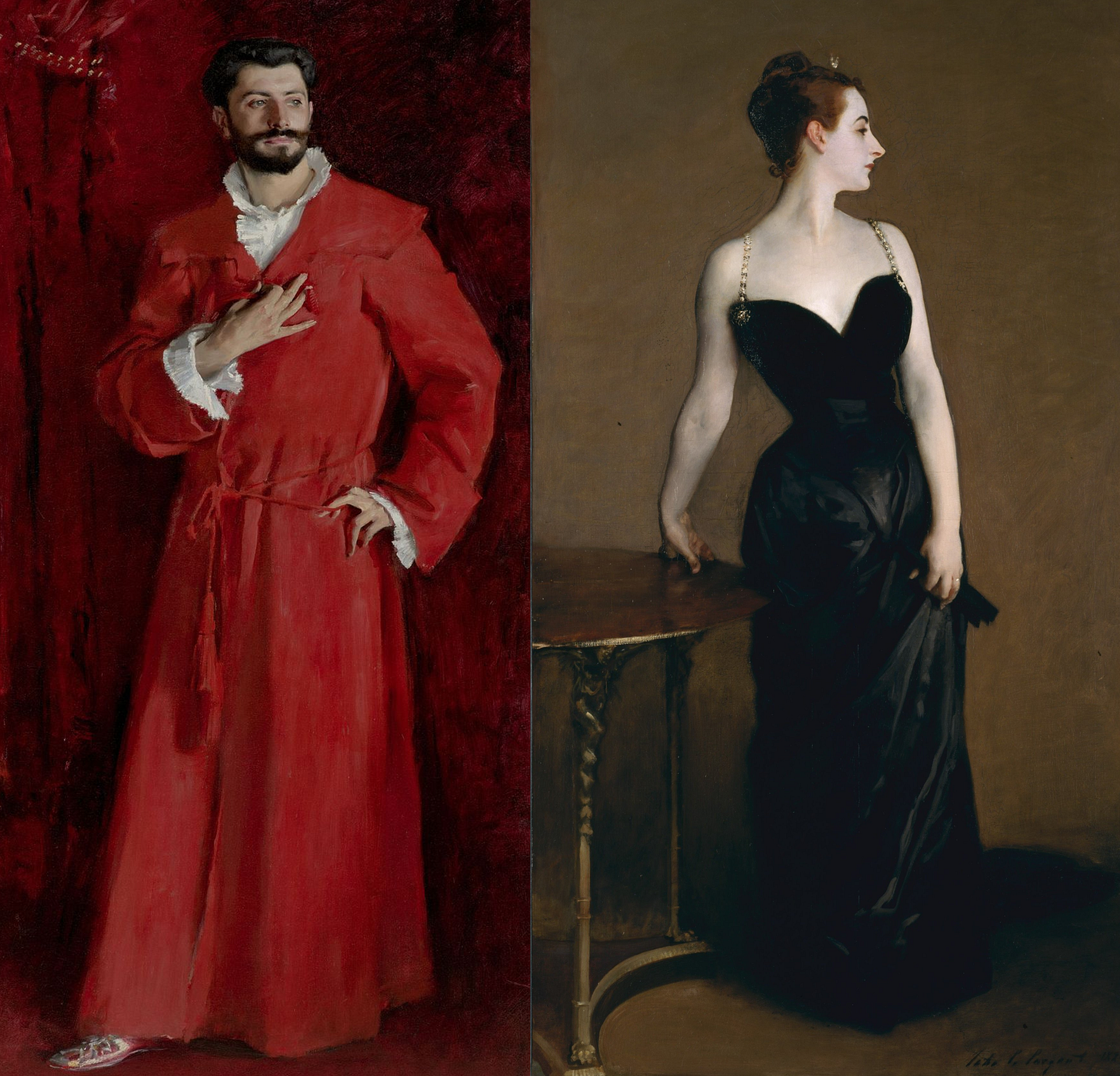In his early years as an artist, John Singer Sargent had much more of a natural affinity to landscape painting rather than portraits.
But through the influence of his teacher and mentor Charles Auguste Émile Durand (not to mention his travels to Spain, where he became particularly captivated by the work of Diego Velazquez) - Sargent slowly began to recognise that his best prospects in terms of actually making a full time living as artist would be in the field of portraiture.
Thus, from the late 1870s, we find him increasingly moving into this more lucrative genre - and, as we can see in his wonderfully charismatic portrait of Durand from 1879, Sargent was already a bona fide master of his craft at only 23 years old.

But perhaps the first time we really see Sargent amplifying his own ambition and hitting a whole new level as a portrait painter is a work from two years after this in 1881.
Depicting Dr Samuel Jean de Pozzi - a French surgeon and Art Collector - this is a big, bold, and brash work, towering to more than 6ft 5 inches in height; which made it by some distance the largest male portrait Sargent had created at the time.
Yet still, it is not just the physical dimensions and daring colour scheme here which make the piece so captivating.
Just as impressive is the way Sargent chooses to transform his model - a professional medic - into a man with such a regal air, he strikes us someone more like a fashionable Dandy, a leisurely Prince, or a Renaissance Cardinal.

Interestingly, when Sargent completed his masterpiece, he chose not to submit it to the prestigious Salon exhibition - nor, indeed, to any of the other established institutions in Paris (where he was living at the time).
Rather, he waited a year and sent it to the Royal Academy in London instead, under the much more enigmatic title of “A portrait”.
So, it is not clear whether that was simply for artistic reasons, or if it somehow suggests that Dr Pozzi himself was uncomfortable being identified as the model here.
But either way, the work received a highly favourable response from the critics in England - which, in turn, opened countless new doors for Sargent in terms of building a potential client base for patrons in London.
And incidentally, these opportunities would soon prove positively vital to Sargent’s own career - particularly when, in 1884, his famous portrait Madame X caused such a scandal in Paris, that the artist was essentially forced into a move across the English channel to settle in London on a more permanent basis.

All your support is immensely appreciated and plays a vital role in keeping this newsletter going.
Bonus Section
Keep reading with a 7-day free trial
Subscribe to Art Every Day to keep reading this post and get 7 days of free access to the full post archives.




